Best telescopes for kids 2025: The best child-friendly scopes in time for Prime Day
The best telescopes for kids will wow young stargazers and you can expect some serious savings this Prime Day.
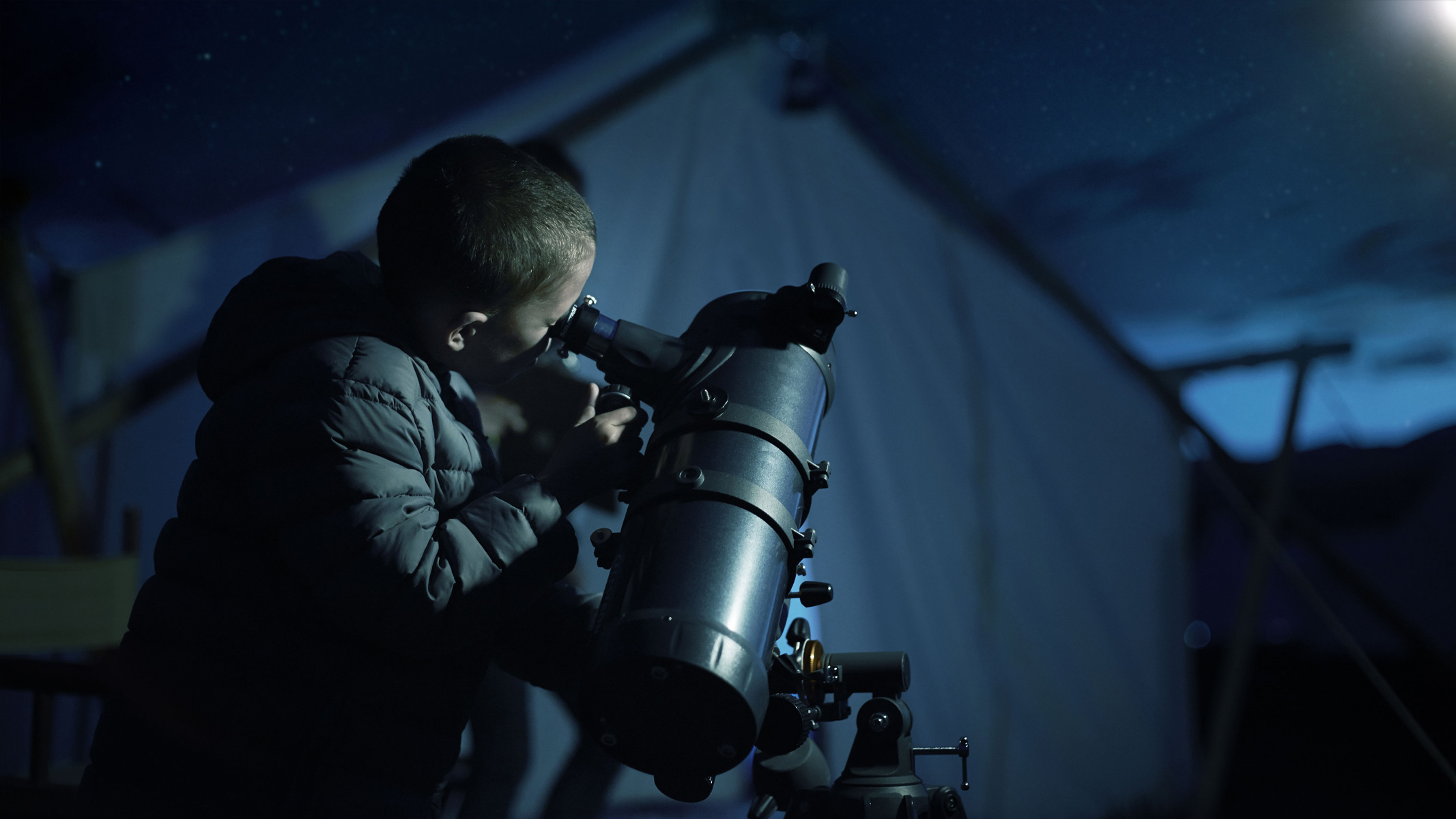
Whether you are looking for a gift for a space-obsessed little one or want to buy your teenager a gift they will cherish for a lifetime, our guide to the best telescopes for kids will help you choose the right one. The models here range from simple telescopes to get little ones excited about space, to ones for kids who are already astronomy buffs!
It'll bet easier to spot constellations during and after the new moon this June 25, so why not spark their interest by showing them big dipper, or the summer triangle? Then on July 10 there's a full moon, which is sure to wow them. You could challenge them to count our closest neighbor's many craters!
You should also keep your eyes out for Amazon Prime Day, which runs from July 8 to July 11. Prime Day is longer than ever, a full four days, and you can expect big savings on some of these scopes. If you are buying for someone who is a little more clued up, we have a guide to the best beginner telescopes. For the best of the best, our best telescopes guide is the place to be.
The quick list
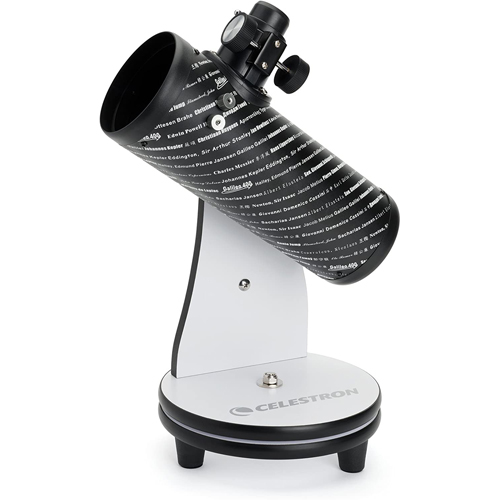
Best tabletop telescope
The FirstScope is a great tabletop telescope, ideal for young astronomers and absolute beginners. It's easy to set up and put away, but it's not the most powerful.
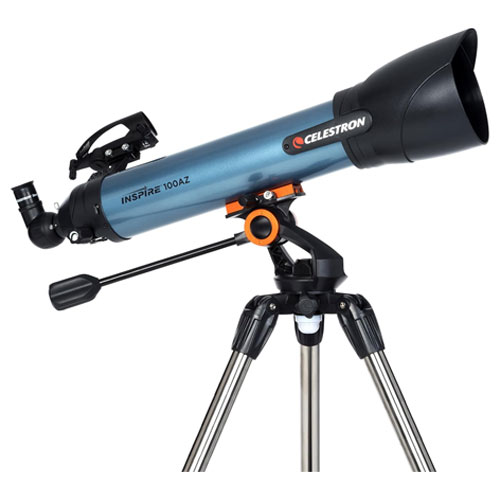
Best quality for beginners
Boasting excellent build quality and sharp views of the planets and the moon, this scope goes above and beyond most beginner scopes.
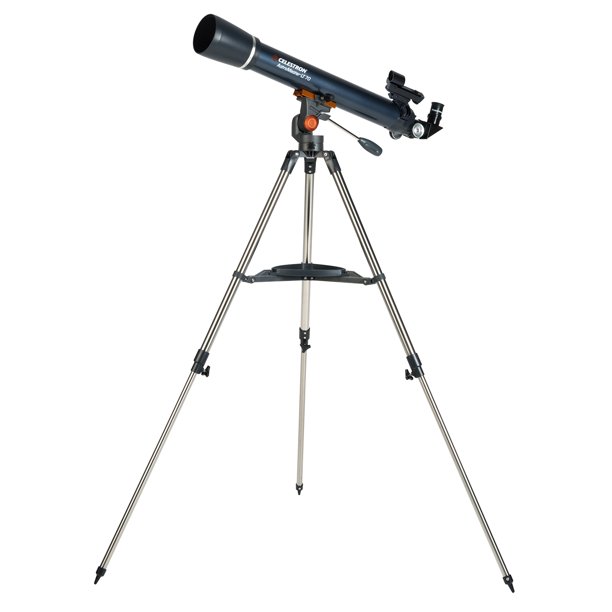
Best for viewing planets
The Celestron AstroMaster 70AZ is a very good starter telescope. It's not great for deep sky viewing, but it'll provide some great views of the moon and planets.
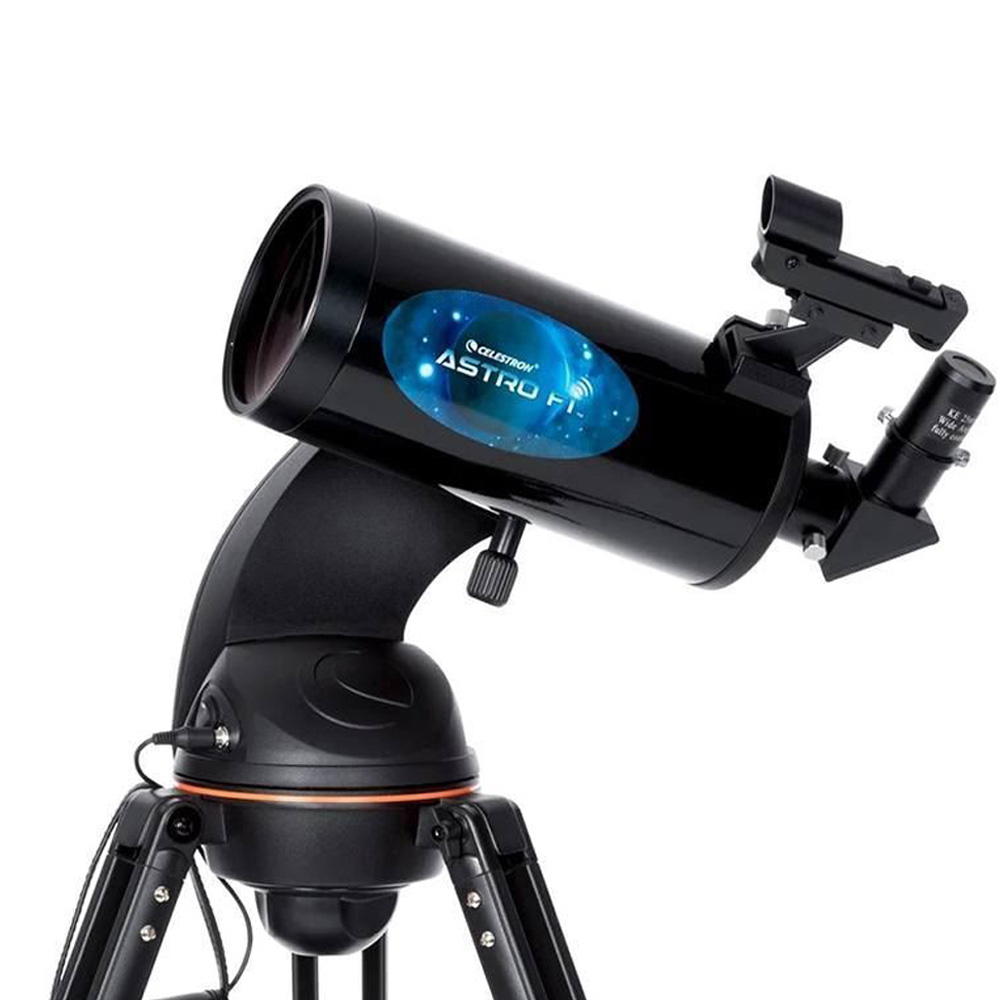
Best for teens
This is a great telescope that gives wonderful views of the night sky, but setting it up can be a little tricky, so we'd recommend it for older children rather than the youngest stargazers.
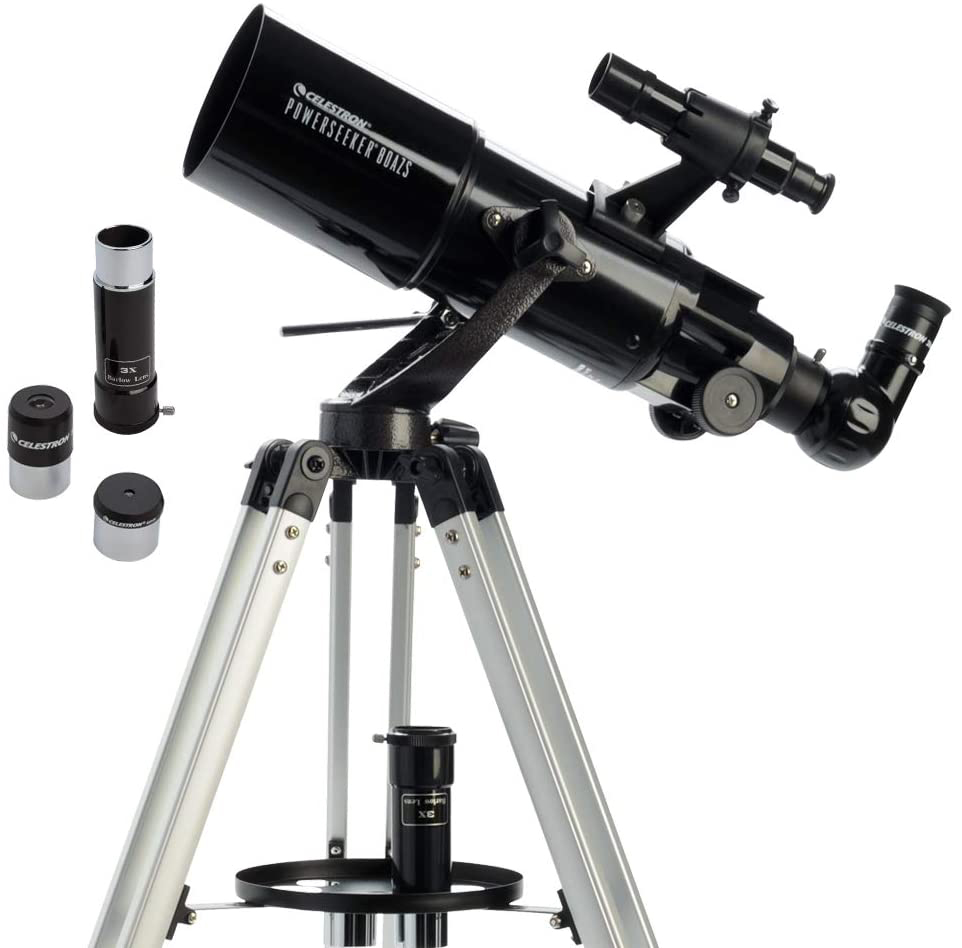
Best for experienced young stargazers
Easy to set up and use, this telescope is a good option for more experienced young astronomers who want to stargaze independently, and can be upgraded with additional eyepieces.
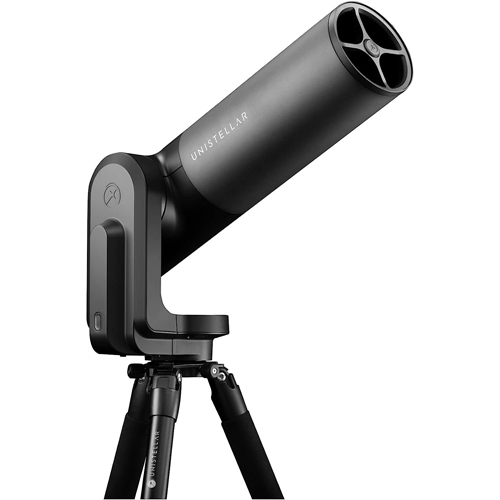
Best smart telescope
This is an expensive bit of kit but it's also an incredible and powerful telescope. Super easy for beginners to get to grips with and requiring no prior knowledge to use, it will last for years to come.
Best telescopes for kids we recommend in 2025
Why you can trust Space.com
Best tabletop telescope

Specifications
Reasons to buy
Reasons to avoid
✅ You want low investment: For casual viewing, this telescope is a great option with a low price point.
✅ You don't want to spend ages setting it up: It arrives assembled and ready to go, so no complicated setup process needed.
❌ You want to find objects easily: It doesn't come with a finderscope, so anyone wanting to locate certain celestial objects easily may get frustrated.
❌ You want all the extras: This package doesn't include a finderscope, so you'll need to either buy one separately or consider another telescope package that does.
🔎 Celestron FirstScope 76 Tabletop Telescope If you have children who have been bugging you for a telescope and you can't quite commit to a moderately-priced instrument, then the FirstScope may be for you — especially if the moon and casual glances at the night sky are of interest. ★★★★
The Celestron FirstScope 76 has been designed with children and beginners in mind — as the name suggests, it's a first telescope. It comes fully assembled, meaning it's ready to use as soon as you take it out of the box. Weighing just 4.3lbs (1.95kg) it's very lightweight, though we think it feels very robust. It sits neatly on a table, and thanks to being very portable it's easy to move around different spots in the home — or even take on a trip.
The FirstScope 76 can't compete with more expensive telescopes, but that's to be expected for one of the most affordable models on the market. It offers great views if you're looking at closer objects, like spotting craters on the moon or gazing at Jupiter, but you'll struggle to get a clear image of celestial objects further away. We did glimpse Saturn and its rings, but it was rather faint and fuzzy.
That said, the fast focal ratio here coupled with its wide-angle view make it an ideal telescope for spotting star clusters. We had great success spotting Pleiades (Messier 45) in the constellation of Taurus since all the points fitted neatly into our field of view.
In terms of optics, you're getting a Newtonian reflector with two eyepieces: a 20mm, which provides 15x magnification, and a 4mm, which provides 75x magnification. We advise investing in additional eyepieces to get the very best out of the 180x highest useful magnification. Unfortunately, the telescope is missing a finderscope to aid in navigation and alignment, making star-hopping particularly tricky, so we'd also recommend investing in a red dot finder for your telescope. Fortunately, these are relatively inexpensive to buy.
Overall, this telescope's sturdy build, straightforward nature, and friendly price point make it a great choice for a kid's first scope, but more experienced stargazers will want to upgrade to something more powerful quite quickly.
- Read our full Celestron FirstScope 76 Tabletop telescope review
Attributes | Notes |
|---|---|
Design | Good quality build for the price. |
Performance | Provides a 'wow factor' for young observers. |
Functionality | Optics struggle to pick out detail. |
Best quality for beginners
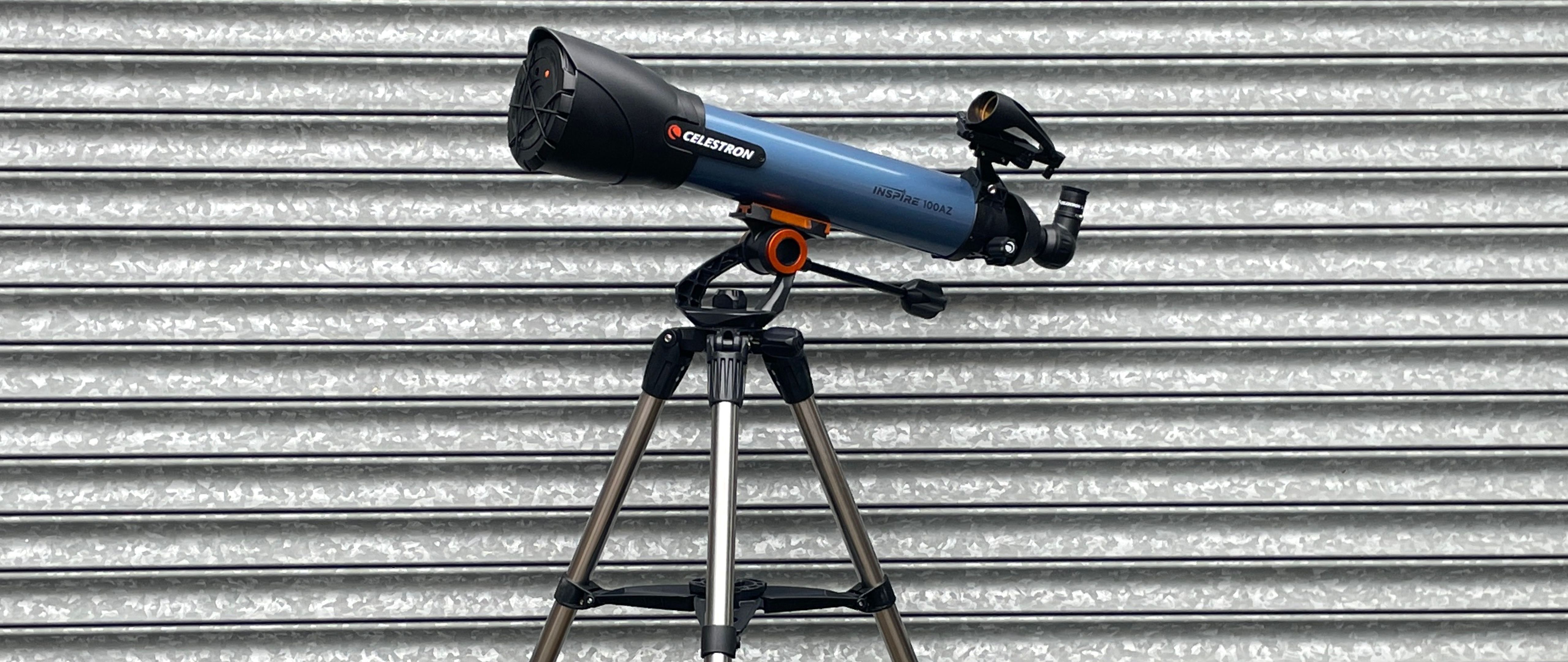
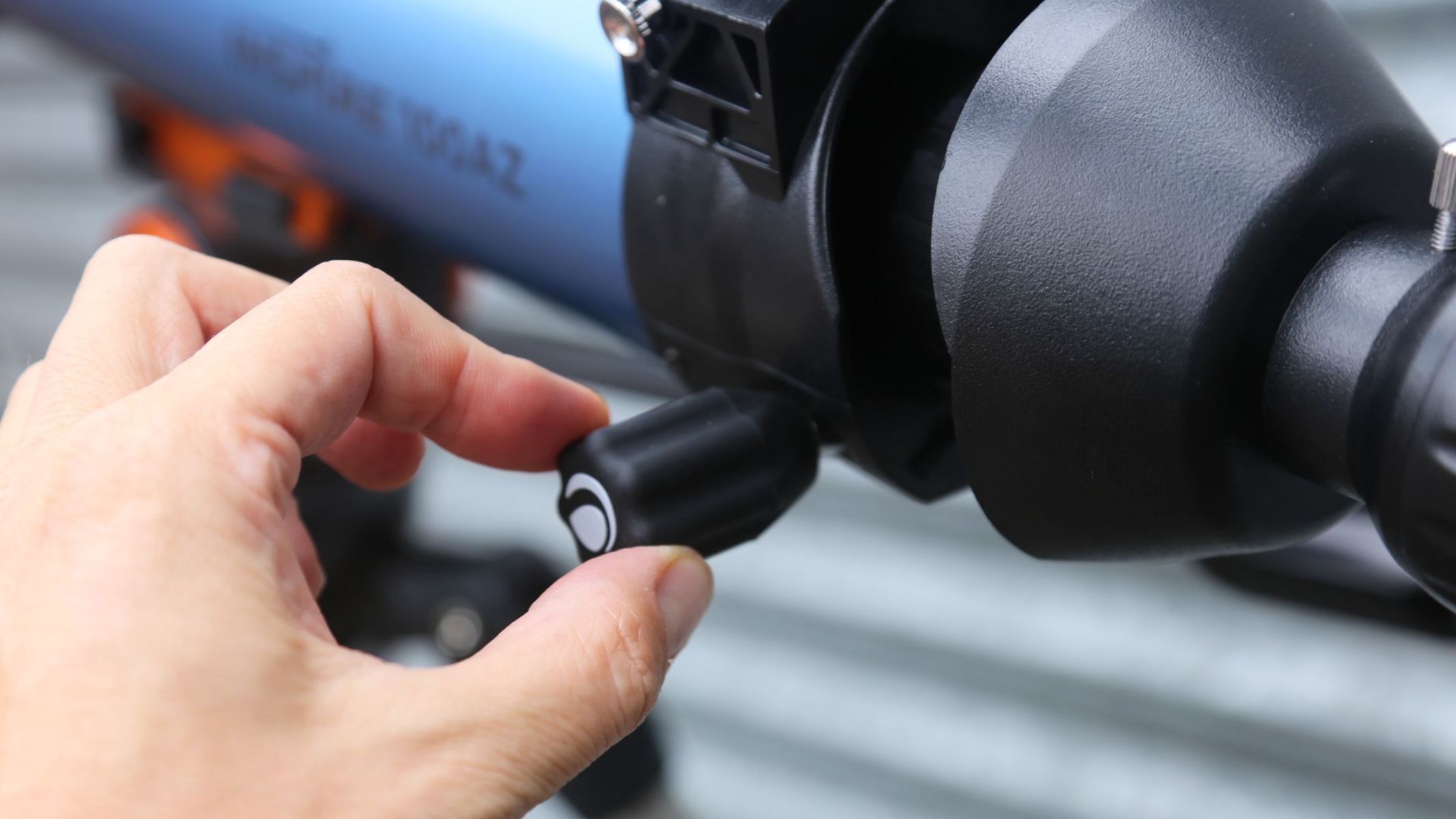
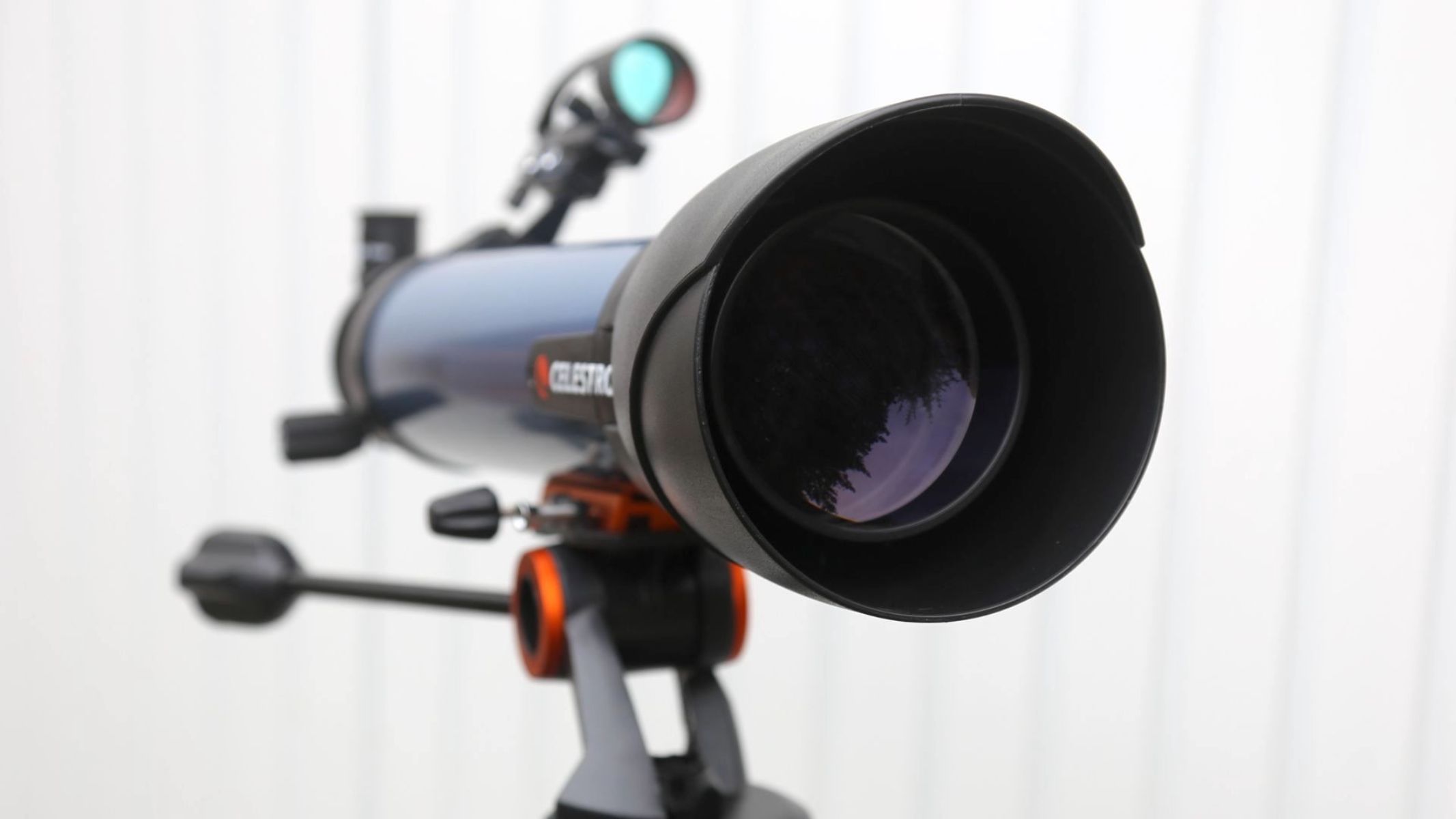
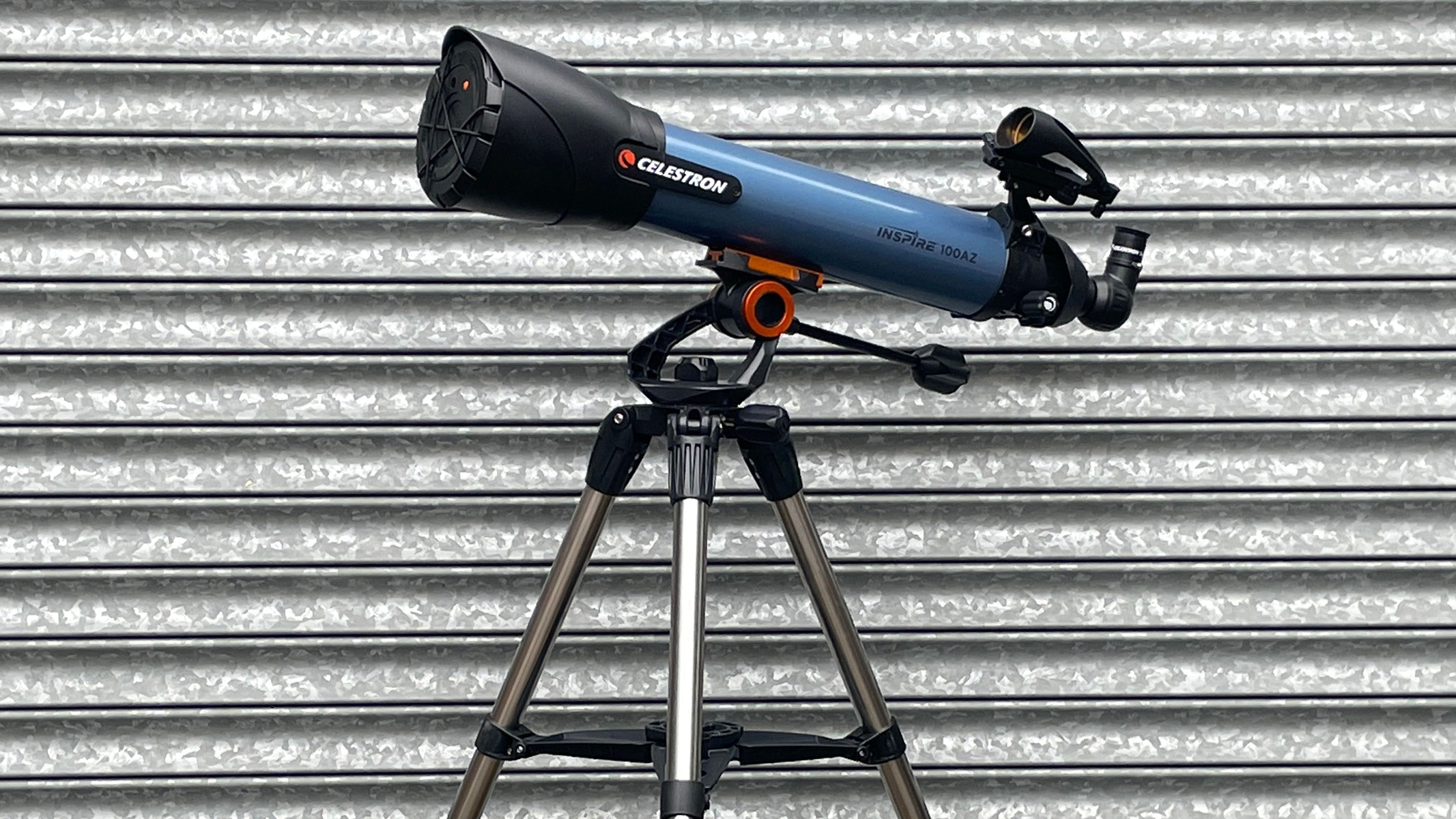
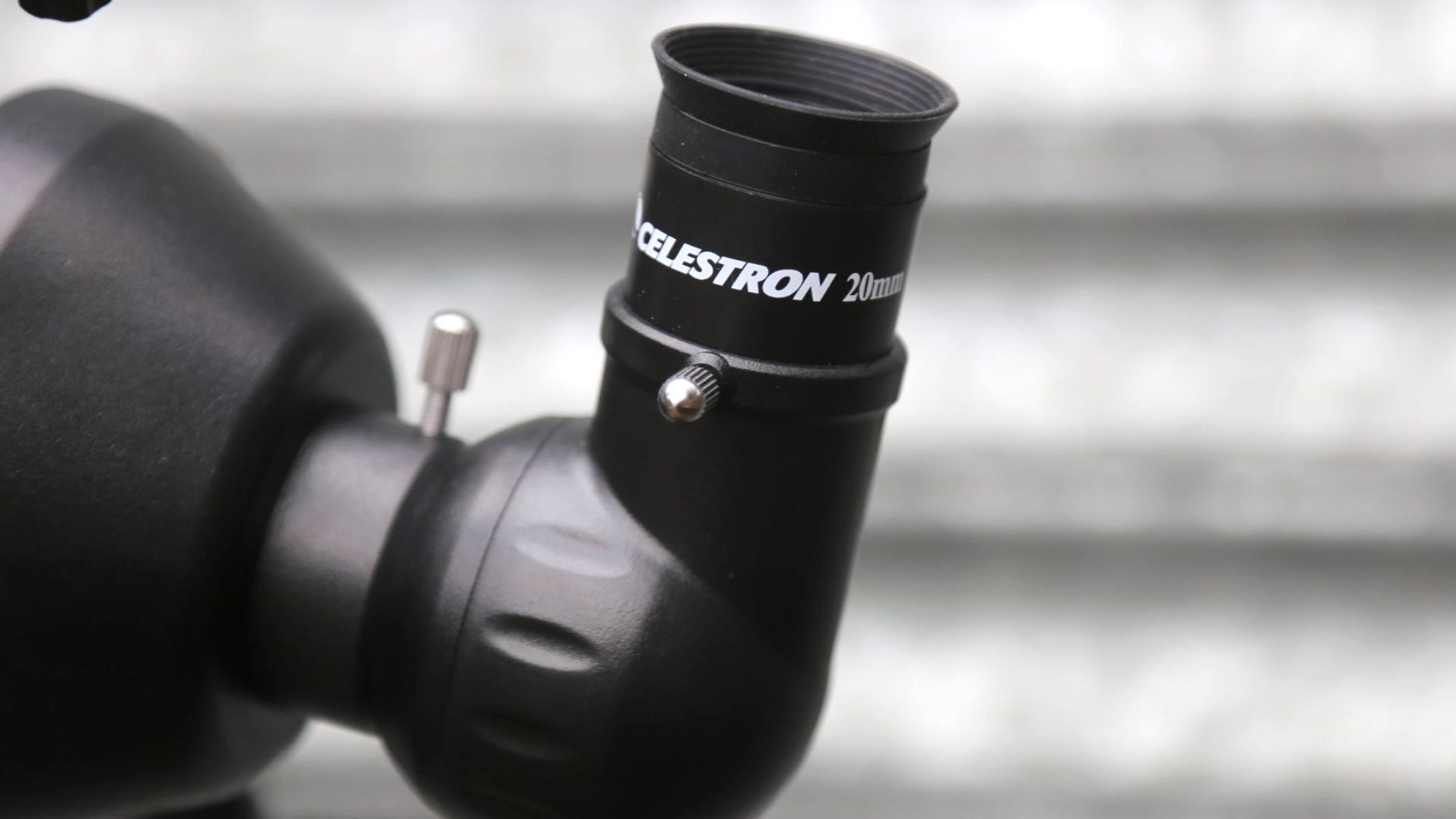
Specifications
Reasons to buy
Reasons to avoid
✅ You want an affordable beginner-friendly telescope: This telescope is easy to assemble and offers more than you'd expect from its price bracket.
✅ You want to view the moon and planets: This offers excellent views of our closest neighbor and many other planets.
❌ You want to clear views of deep space: While you can do some deep space viewing with this telescope, the image quality isn't great.
🔎 Celestron Inspire 100AZ An excellent telescope for a beginner — well built and ideal for viewing the moon, planets and some deep sky observation. ★★★★
We think the Celestron Inspire 100AZ is a fantastic beginner telescope for older kids and teens looking to get hands-on with their astronomy. It's lightweight and portable and has an impressive build quality for the price. It's complete and ready to use, coming with 10mm and 20mm eyepieces, a StarPointer Pro finderscope and also a 90º image erect diagonal
Its 100mm aperture admits plenty of light, ideal for viewing objects in our solar system, such as the moon, Venus, Jupiter, Saturn and more. In our review of the Celestron 100AZ, we were able to spot Andromeda (M31) and some brighter star clusters, though we noted that it "Lacks the aperture to go exploring the true deep sky."
As far as image quality goes, we had some minor false chromatic abberation on the 100AZ when viewing Jupiter, but less so than with other models. Its image quality for viewing planets and the moon was excellent. It's a little pricier than some models on this list, but it punches well above its weight.
Speaking of weight, it may be a little too heavy for very young children, but they're likely to have little trouble using it. The Celestron Inspire 100AZ built to last and, offering good value for money, could stay with them well into adulthood.
- Read our full Celestron Inspire 100AZ review
Attributes | Notes |
|---|---|
Design | Lightweight, easy to assemble |
Performance | Clear views of the moon and, planets, less so nebulae |
Functionality | Built in smartphone adapter |
- See our Best eyepieces for telescopes guide for optional upgrades
Attributes | Notes |
|---|---|
Design | Lightweight and portable design. |
Performance | Red dot finder makes star-hopping easy. |
Functionality | Offers wide field views for many different objects. |
Best for viewing planets
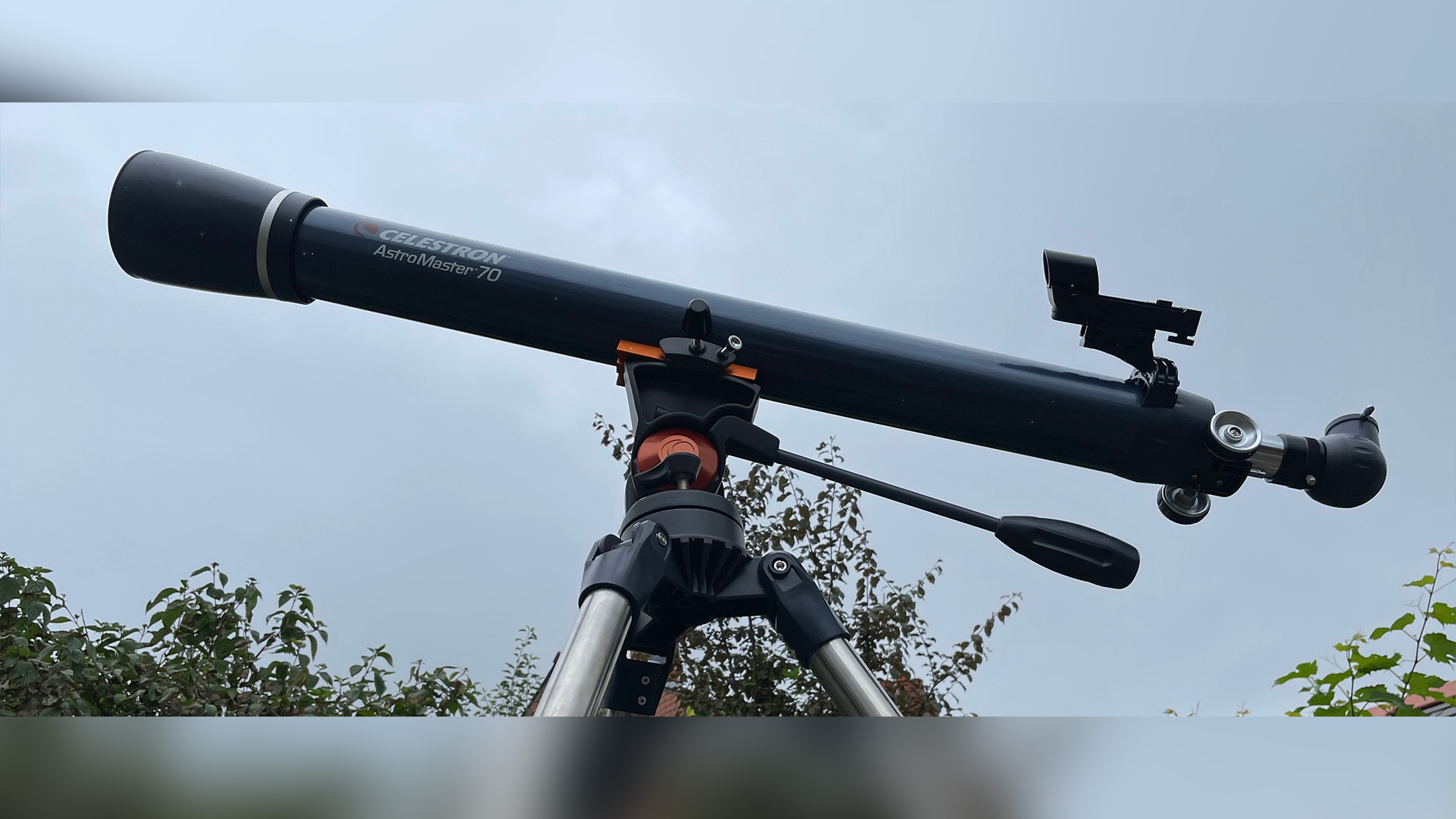
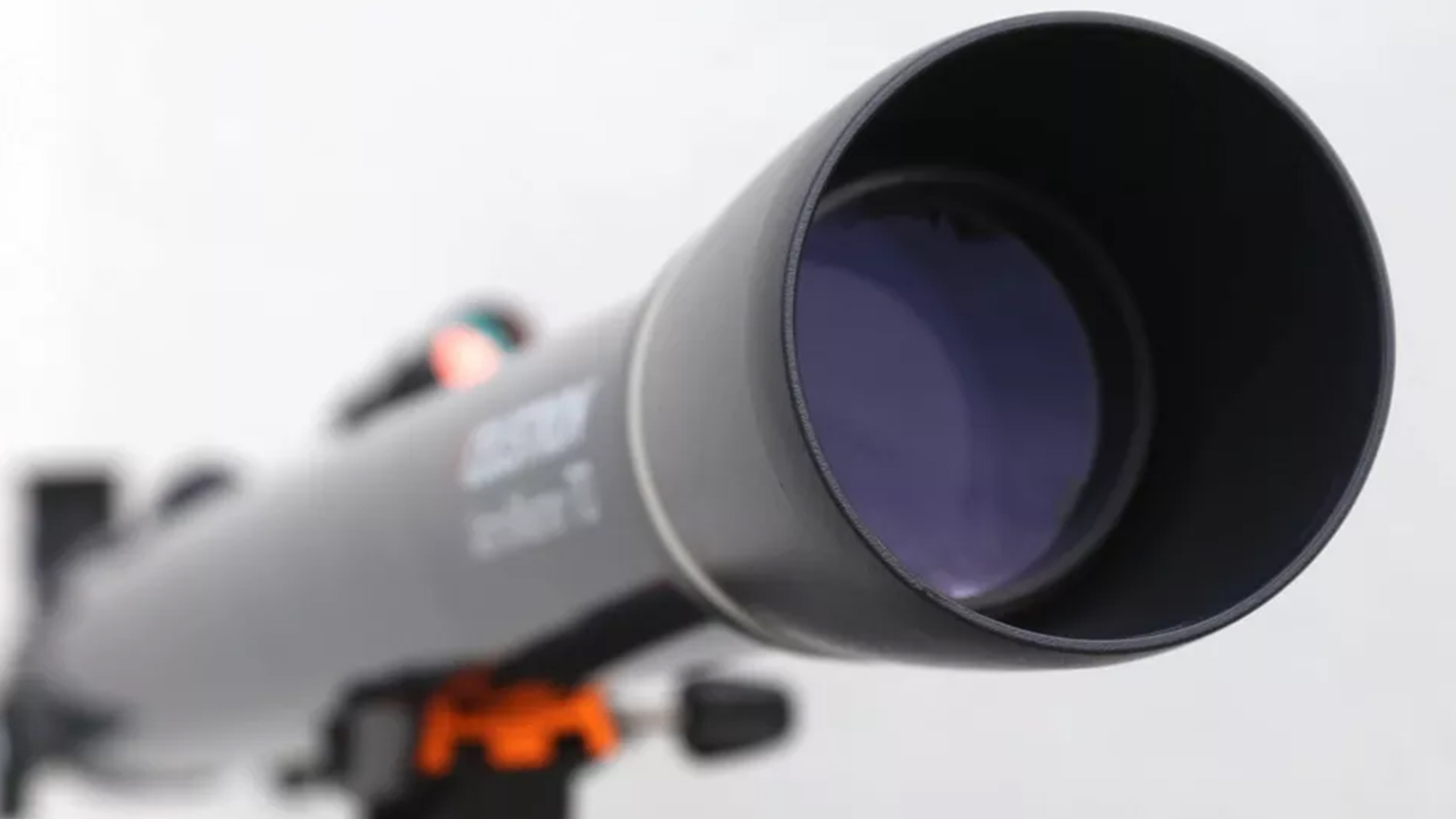
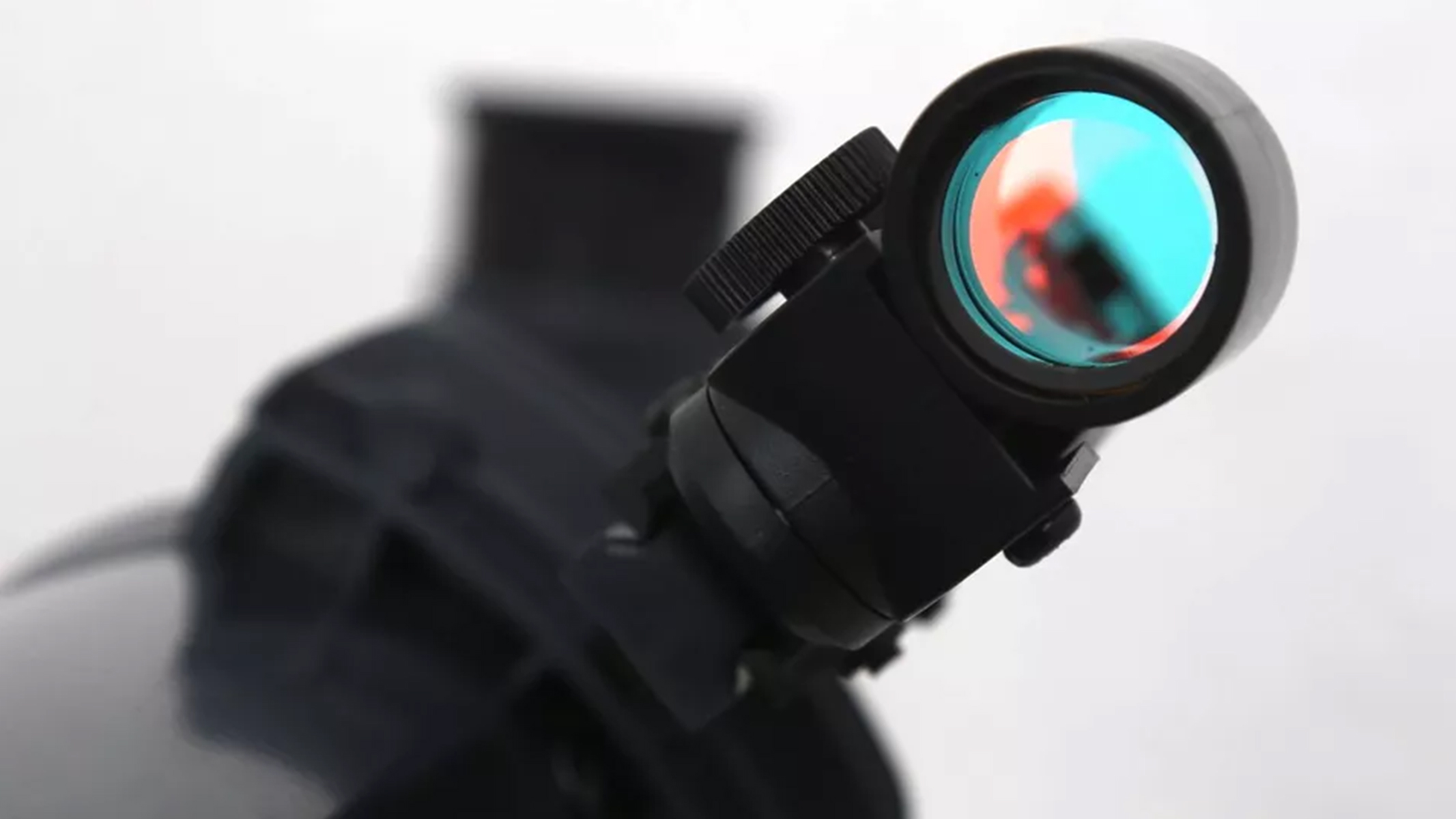
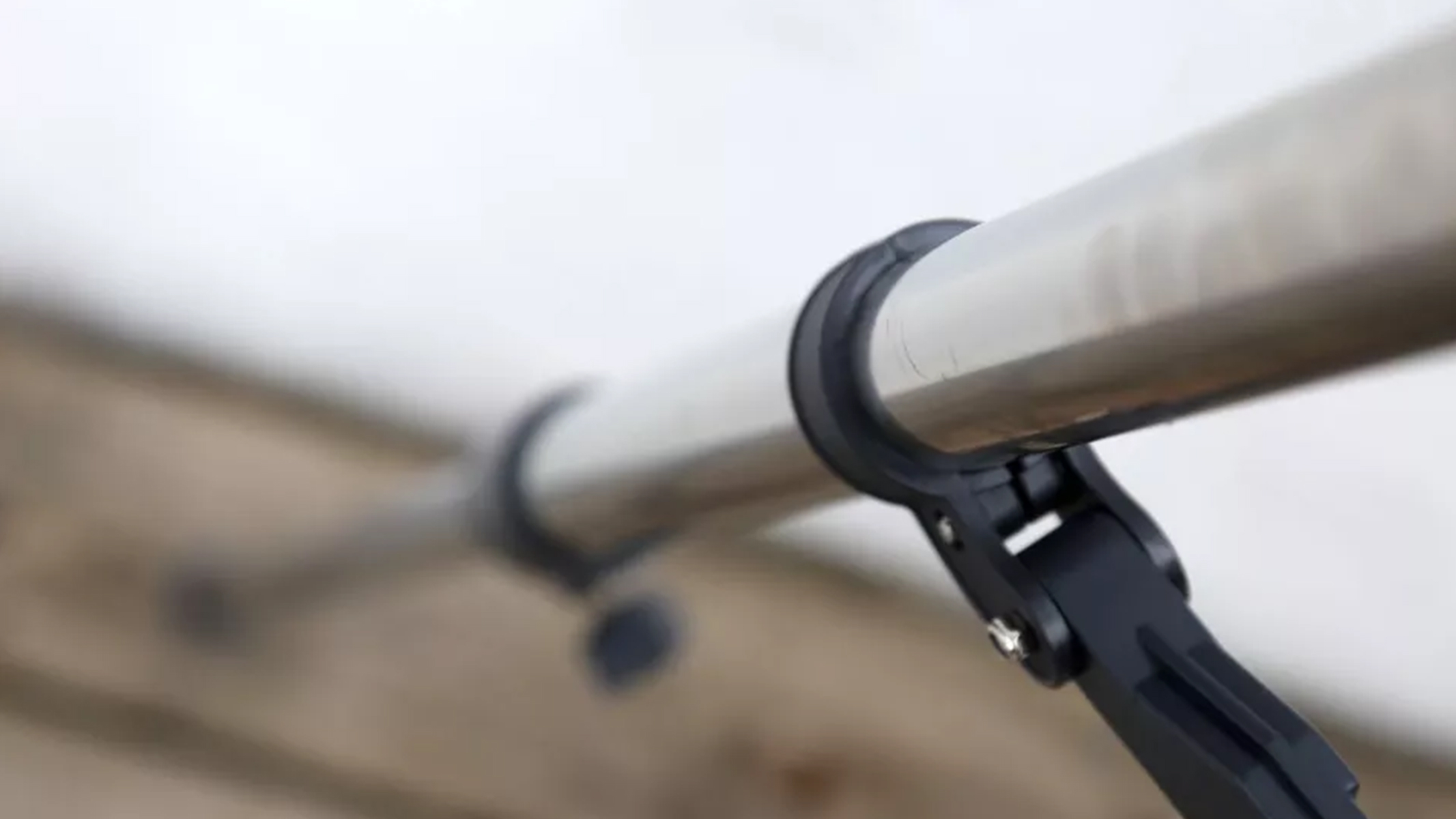
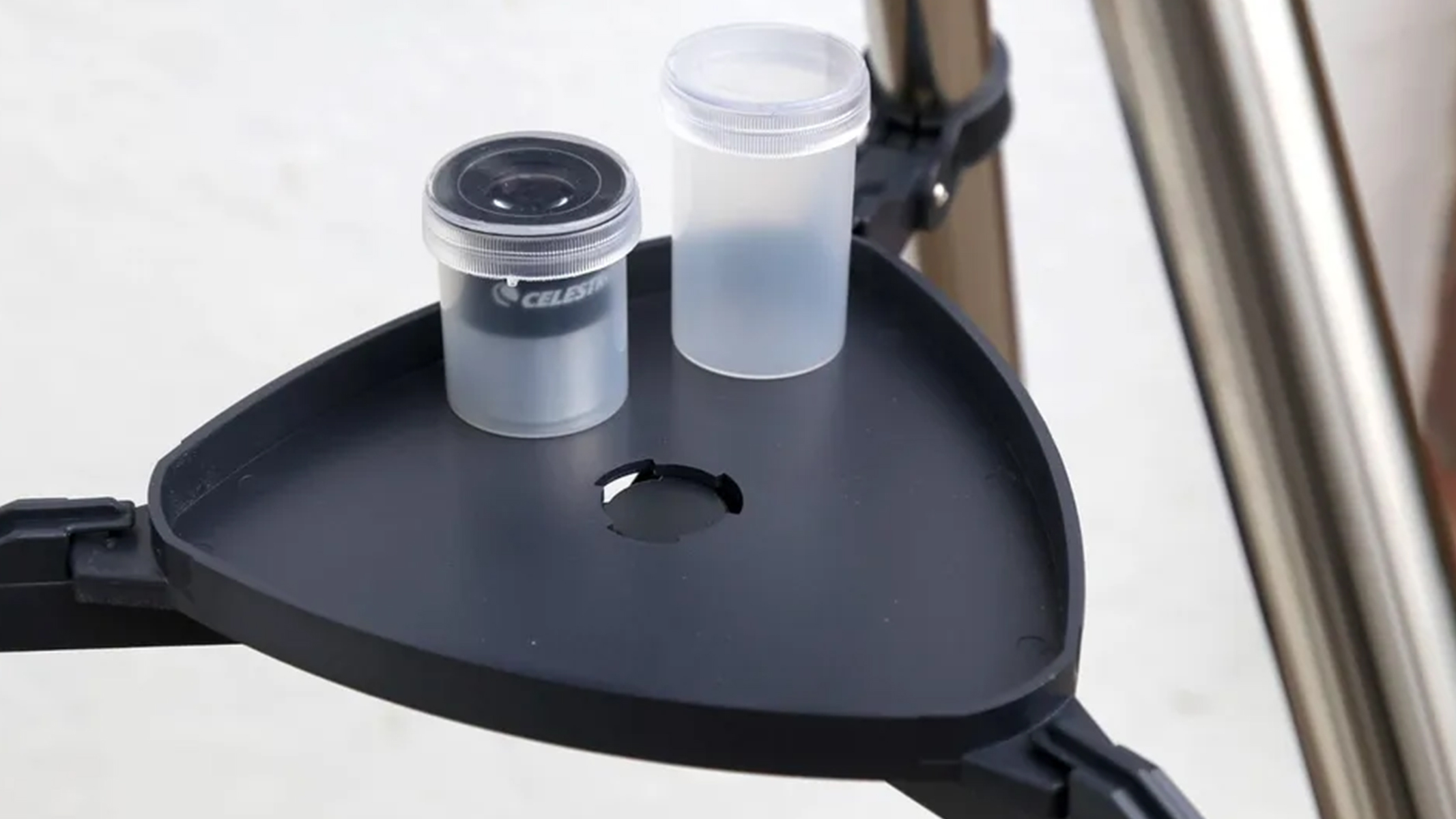
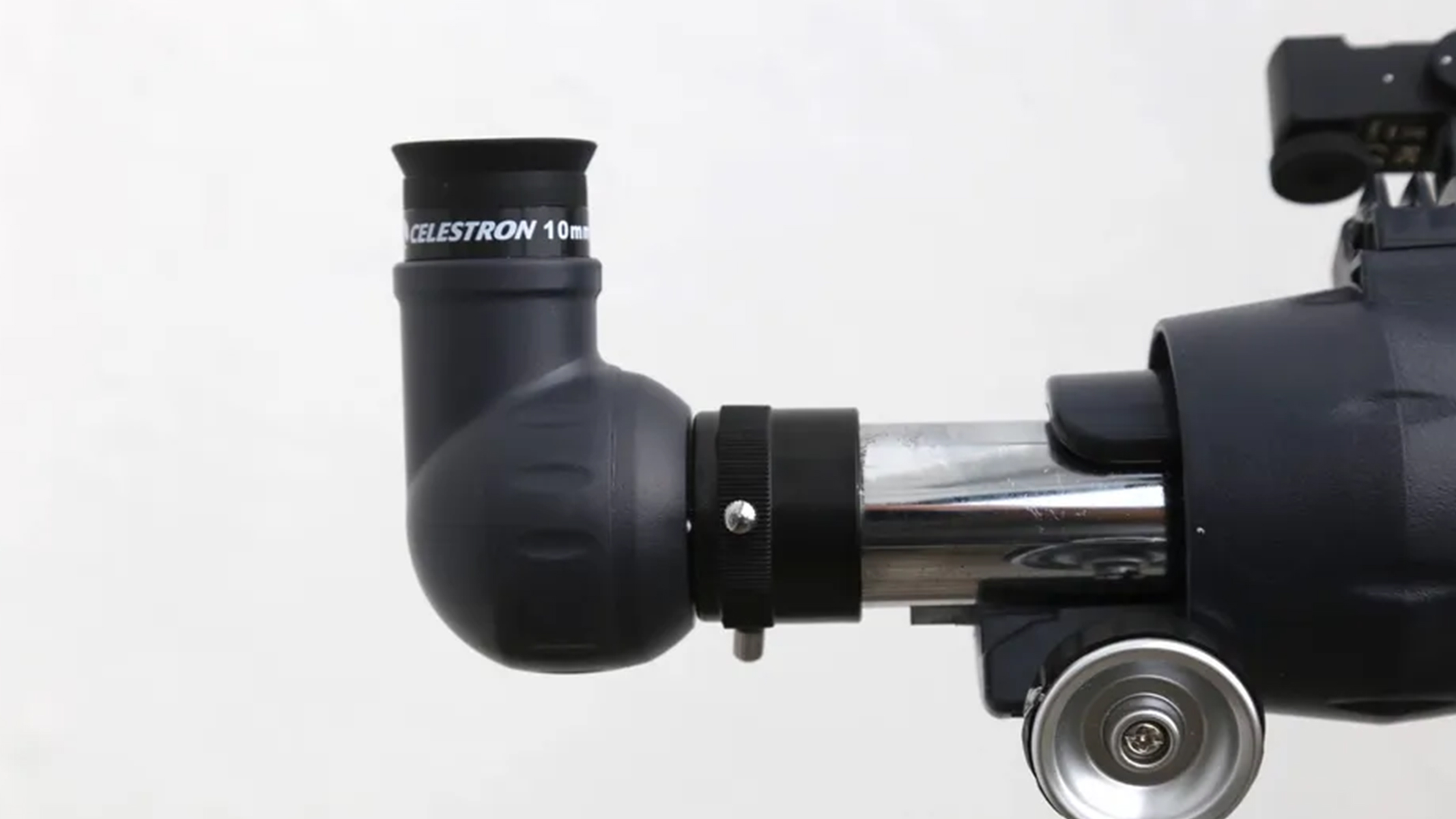
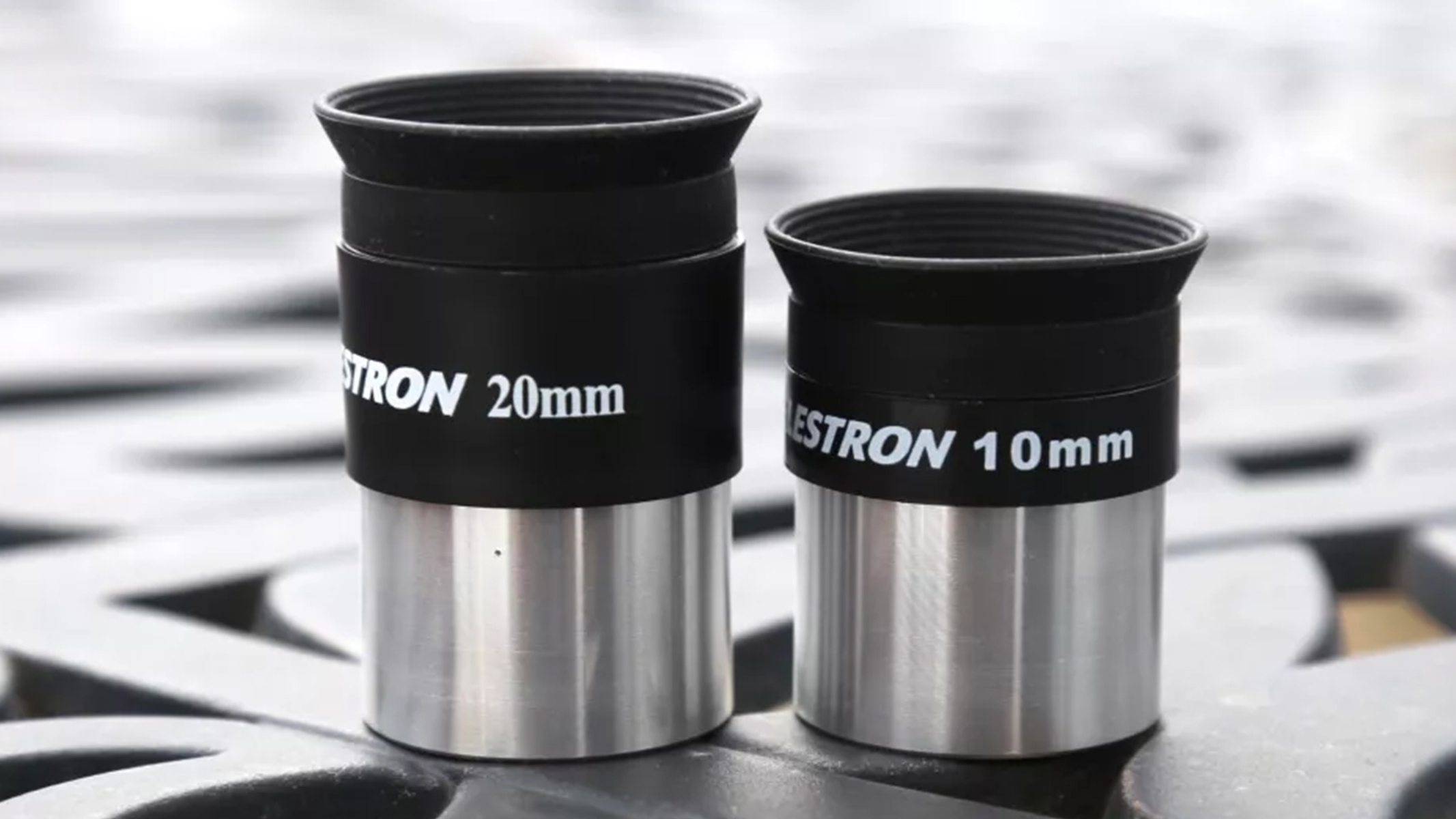
Specifications
Reasons to buy
Reasons to avoid
✅ You have a small budget: This telescope is very affordable, although you do get what you pay for.
❌ You want something that's going to last: We noted in our review that it wouldn't be enough to hold the interest of beginners for a long time.
❌ You want to see deep-sky objects: While you can see some deep-sky objects, we found them to appear quite dull, so we'd recommend looking elsewhere.
🔎 Celestron AstroMaster 70AZ: This lightweight chromatic refractor uses its relatively long length to produce natural-looking views of planets and the moon, but for anything else it's underwhelming. It's also quite difficult to lock onto targets. ★★★
The Celestron AstroMaster 70AZ is aimed squarely at beginners. It's a 2.7inch (70mm) achromatic refractor telescope that features an unusually long tube (35 inch/900mm) and a focal ratio of f/13. We've found that it offers excellent views within our own solar system without any chromatic aberration (i.e. 'false color') which is common in other budget achromatic refractor telescopes. For looking at the moon then, it offers true-color views that are hard to beat. We've talked about this in more detail in our AstroMaster 70AZ review.
Inside the box of the AstroMaster 70AZ, you'll find everything you need. There's an adjustable tripod which, helpfully for younger users, can be used at either full height or half height. There's also a StarPointer finderscope, an L-shaped erect image diagonal, and two Kellner eyepieces (20mm that offers 45x magnification and 10mm for 90x magnification).
We've found the views of the moon through the Celestron AstroMaster 70AZ to be very pleasing, and gazing at the moon and planets have given us beautiful and natural-looking images. We've even been able to pick out Saturn's rings and Jupiter's moons with clarity. However, thanks to the focal ratio of f/13, there's not enough light-gathering power here to see deep-sky objects clearly, so you can forget about seeing things like the Andromeda Galaxy. Still, for beginners, the views of our solar system are excellent — but if children are serious about astronomy they might outgrow this telescope quickly.
As expected at this price point, this is a manual telescope, but we were pleased to see that it features a panhandle with a clutch for securing it in position and adjusting the field of view. Unfortunately, while it's straightforward to set up, it can be tricky to aim the telescope and lock onto targets due to a bit of overreach and recoil.
- Read our full Celestron AstroMaster 70AZ review
Attributes | Notes |
|---|---|
Design | Lightweight design. |
Performance | No 'false color', but dull deep-sky objects. |
Functionality | Difficult to lock on to targets. |
Best for teens
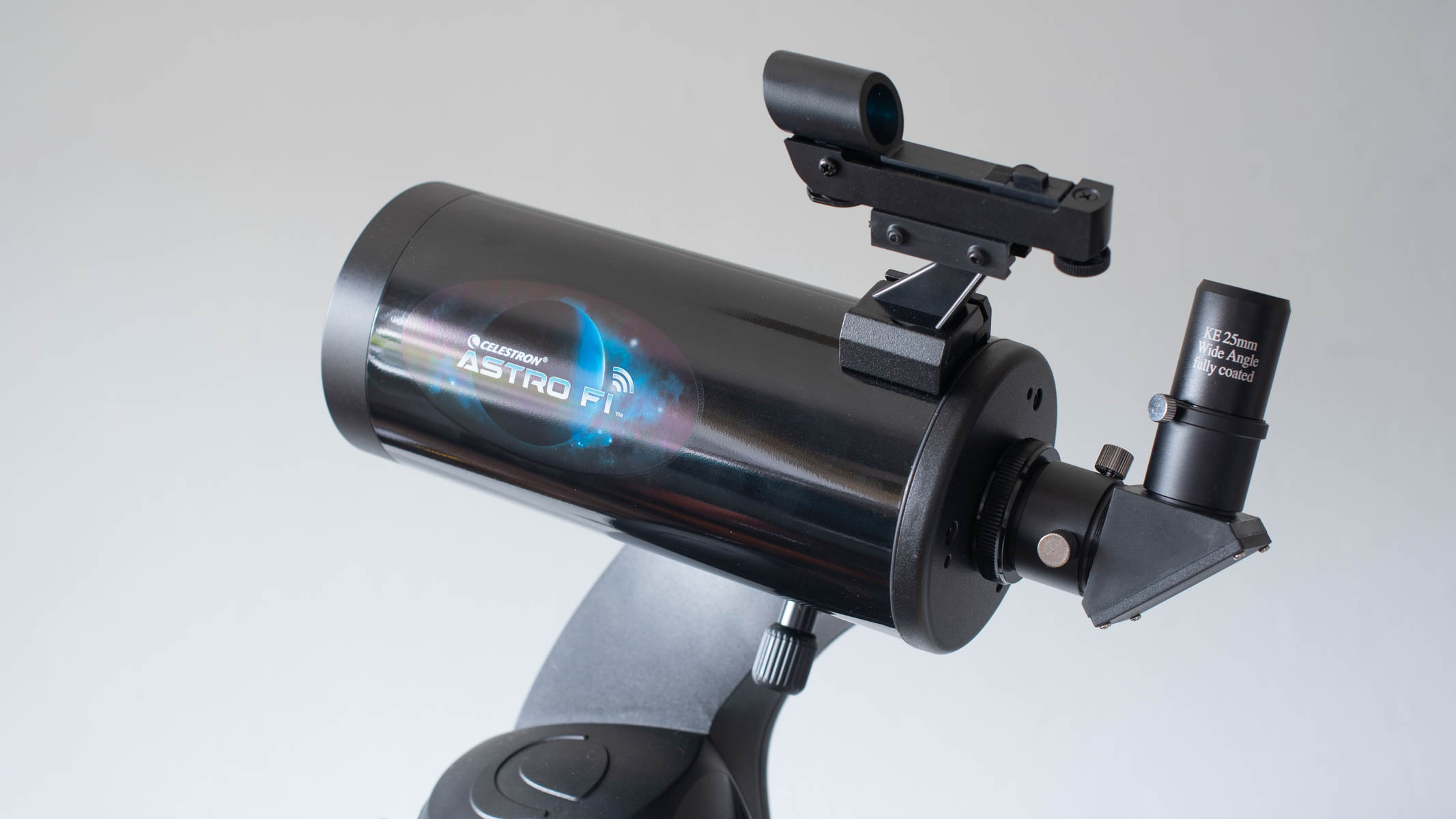
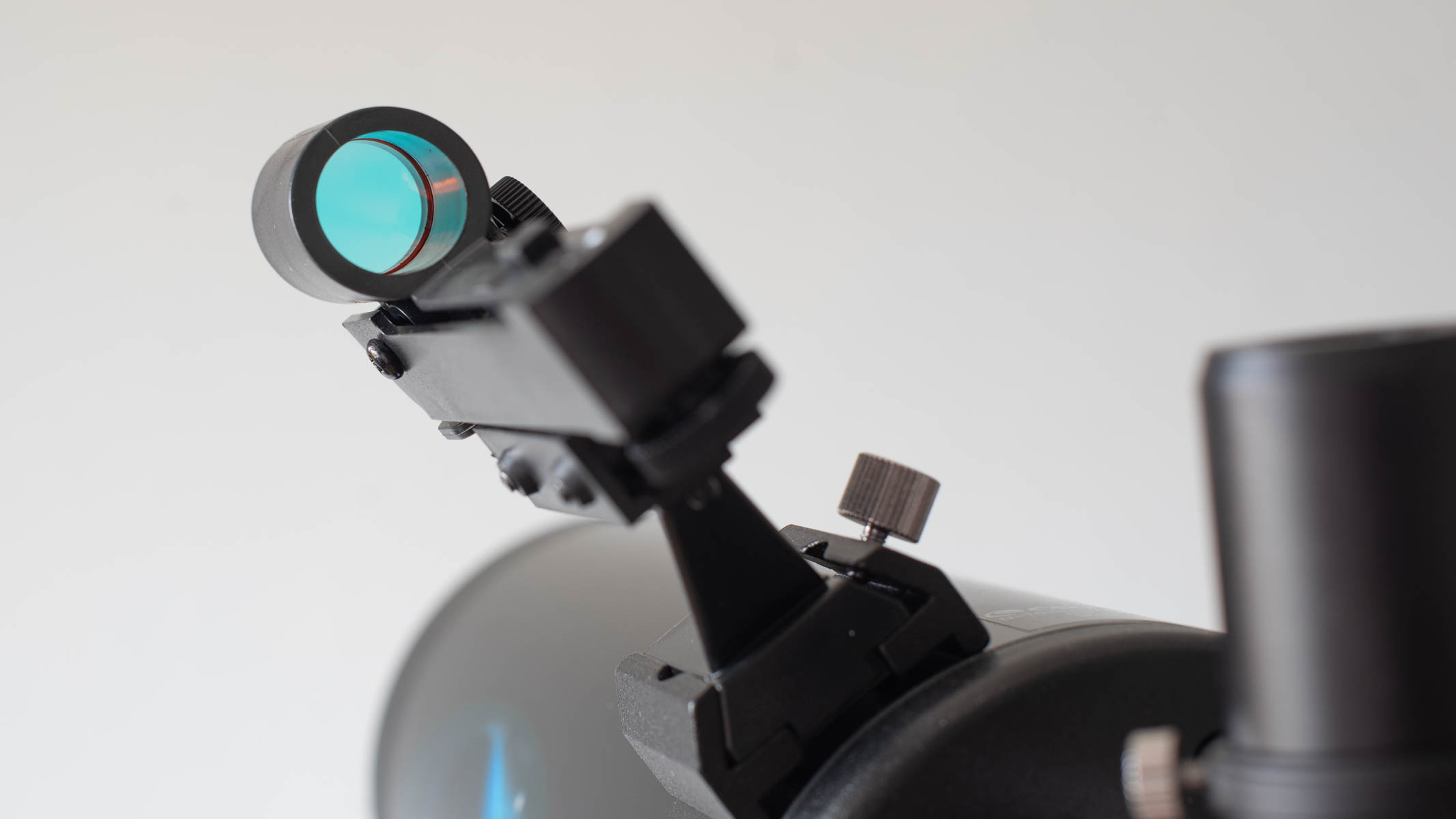
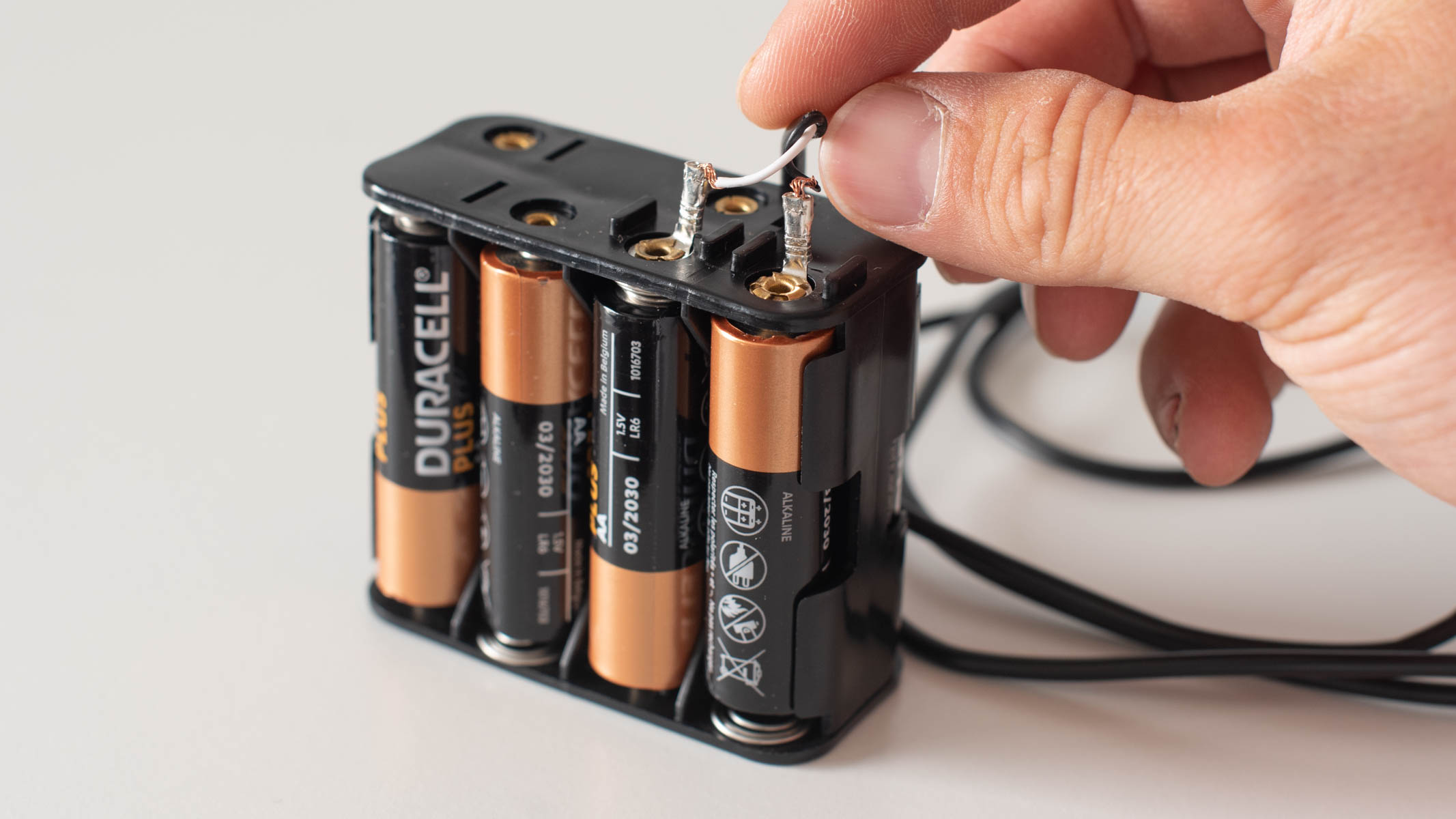

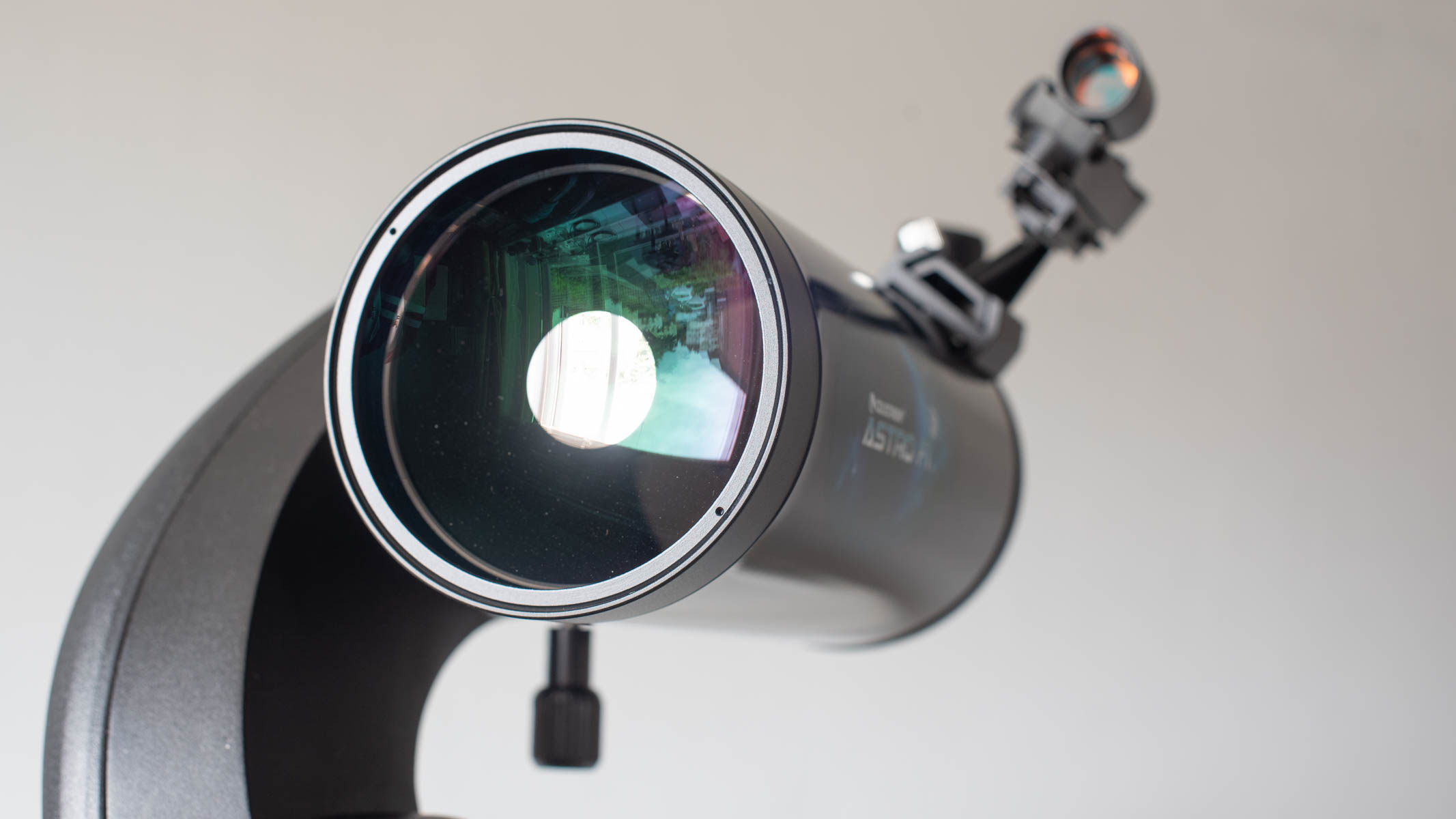
Specifications
Reasons to buy
Reasons to avoid
✅ You want alignment technology: The SkyAlign technology makes aligning your telescope a breeze, all at the touch of a button.
✅ You want something portable: This telescope is lightweight and easy to transport, making it a great option to take on camping trips to dark sky sites.
❌ You don't want technology: This telescope requires the use of its app in order to function, so users looking for a more traditional approach should look elsewhere.
🔎 Celestron AstroFi 102 A basic telescope best suited to lunar and planetary observation. The motorized mount can initially be tricky to set up for beginners, but it comes at a reasonable price for a decent night sky view ★★★½
The Celestron Astro Fi 102 is an excellent value for money telescope. It combines advanced technology, great customer support and portability, resulting in a solid telescope that's great for beginner and tech-savvy skywatchers.
You'll get everything you need to begin right out of the box. The Celestron Astro Fi comes with 10mm and 25mm eyepieces (offering magnifications of 132x and 53x), a red dot finder and a smartphone adapter (perfect for trying out astrophotography for beginners). The best part is this all comes in a lightweight package, making this a telescope that's easily transported.
In our Celestron Astro Fi 102 review, we praised the great views provided by the optics and noted how great it was in particular at providing excellent views of Venus, Mars, Jupiter and Saturn. Its four-inch aperture is great for getting clear, detailed views of the moon's terrain too. We also used it to gaze at the Andromeda Galaxy, and playing with the magnification a little allowed us to see its disk too.
One of the highlights of the Astro Fi 102 telescope is its use of Celestron's SkyAlign technology. By using the Celestron SkyPortal app on your smartphone, you can auto-align the telescope with the night sky. You see, the app will determine your position in the world while also noting what celestial objects will be visible to you from that position. We think it's excellent, and makes observing the night sky not only easy but also great fun — two ingredients that are absolutely essential for getting kids interested in astronomy.
It's worth bearing in mind that given the price point of the Astro Fi 102 telescope, some compromises have had to be made. Its external casing is made of plastic, for instance, instead of the metal you'd find on more expensive telescopes — but it does mean that this remains a lightweight bit of kit. It's a little more fragile as a result but as long as you take care of it (which you should with any telescope), it shouldn't be a problem.
- Read our full Celestron AstroFi 102 review
Attributes | Notes |
|---|---|
Design | Basic plastic casing, tripod needs weighing down. |
Performance | Seamless syncing with the SkyPortal App. |
Functionality | Quiet operation and reliable integrated Wi-Fi. |
Best for experienced young stargazers

Specifications
Reasons to buy
Reasons to avoid
✅ You want to a portable, pick-up and go scope: This scope is easy to set up, so younger stargazers shouldn't need much if any assistance.
✅ You want good views of the cosmos: Young but more experienced stargazers will be impressed by this scope's image quality.
❌ You're giving this to a very young child: The tripod shakes a little and may benefit from a stronger grip.
🔎 Celestron PowerSeeker 80AZS telescope: Easy to set up and use, this telescope is a good option for more experienced young astronomers who want to stargaze independently. ★★★½
The Celestron PowerSeeker 80AZS telescope is an appealing option for more experienced young stargazers, not least because it requires little effort to set up and use. Its Alt-azimuth mount is suitable for up-and-coming astronomers and, despite its budget price, it offers excellent views of the cosmos.
We'd have preferred if the tripod was a little sturdier, but we had plenty of good things to say about this scope in our Celestron PowerSeeker 80AZS review. We awarded it three and a half stars, saying it was "Ideal for casual skywatchers with low budgets for closer views of the solar system and bright galaxies and nebulas."
Its alt-azimuth mount is easy to use, Celestron's Starry Night Special Edition software is included and we were able to achieve magnifications of 20x and 100x with the two supplied Plössl eyepieces. We were a little less impressed with the Barlow lenses, which blurred the image a little, but those are still more accessories than you'd expect for a scope in this price bracket.
Those who've purchased this telescope have been happy with their aquisition. They report being impressed by its ease of use and image quality, which includes (circumstances permitting) clear views of Saturn and Jupiter. The only real complaints are that, as we found, the tripod is a little wobbly.
Attributes | Notes |
|---|---|
Design | Fair for the cost, largely plastic |
Performance | Impressive, with a slight degree of false color |
Functionality | Easy to set up and use but some tripod wobble. |
Best smart telescope

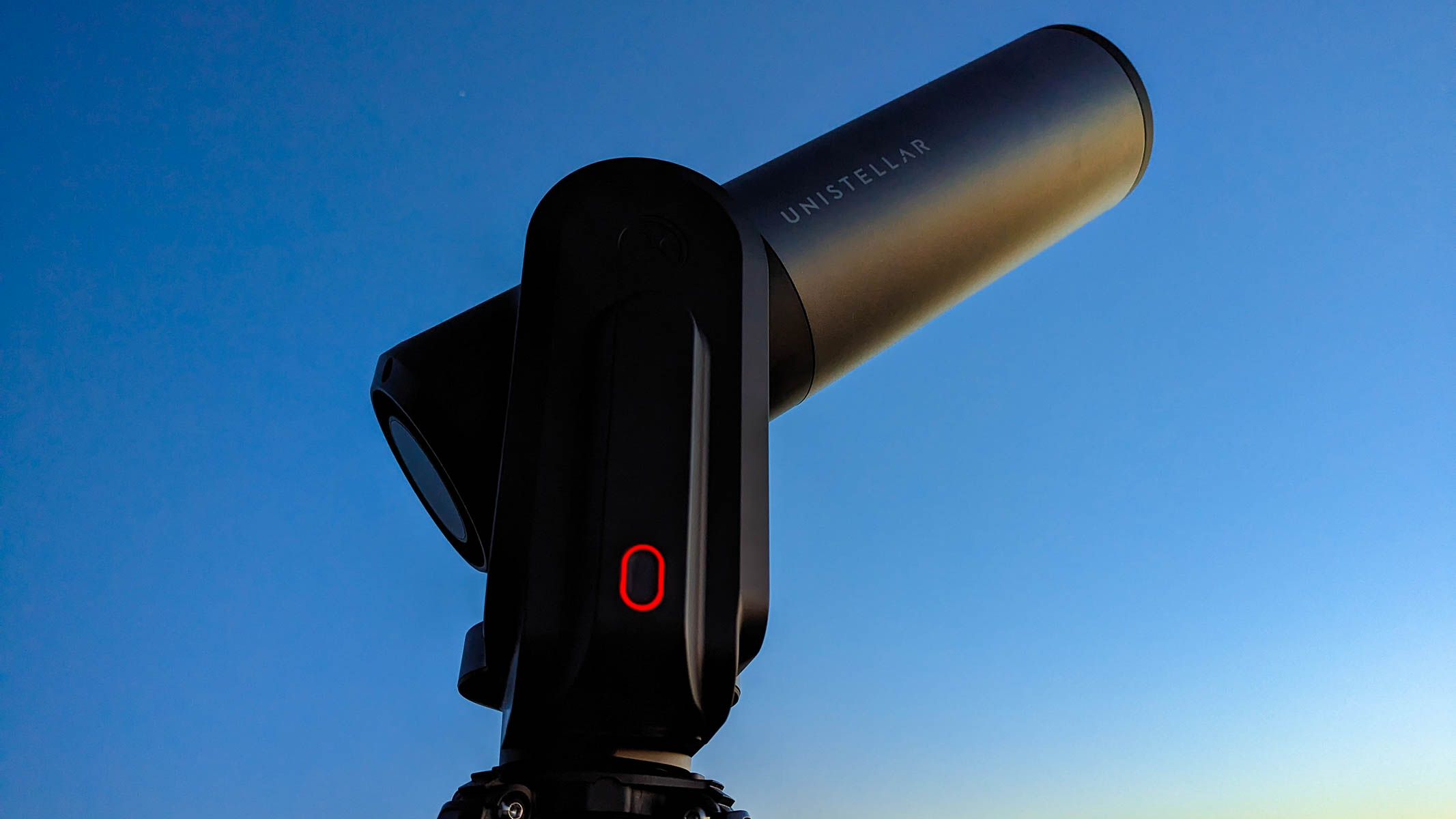


Specifications
Reasons to buy
Reasons to avoid
✅ You want the best: It's expensive, but you're really buying a superior piece of kit with the eQuinox 2.
✅You want simplicity: You won't need to worry about eyepieces or any additional accessories: Everything you need is included here.
❌ You're on a budget: This is in the top end price range of consumer telescopes, so unless you have a big budget it's not for you.
❌ You want a traditional experience: Being a smart telescope, the eQuinox 2 does all the work, so if you're looking for something to help kids learn to navigate the skies themselves, you'll be best off looking elsewhere.
🔎 Unistellar eQuinox 2: Easy to use and seriously beautiful to look at, smart telescopes really don't come much better than this. It's suitable for beginners and experts alike, and since it requires no prior knowledge, it's perfect for kids. ★★★★½
If cost is no object, the Unistellar eQuinox 2 really is one of the best telescopes you can buy for kids. It's one of the best telescopes for any age or any skill level, actually, with this impressive bit of smart tech being favoured by beginners and pros alike.
It packs in all the latest smart technology into a beautifully sleek body. So sleek, in fact, that you'll only find one button on the telescope itself: Other than turning it on and off, you'll control everything via the dedicated Unistellar app. In our Unistellar eQuinox 2 review we commented how easy the app is to use — when the telescope and app are oriented together, the telescope can automatically navigate to any celestial object from a list. It's an incredibly easy and fast way to enjoy the night sky.
Of course, being a smart telescope, everything in the eQuinox 2 is automatic, so if you were looking for a more manual experience to help children learn to navigate the night sky themselves, you're better off looking elsewhere. That said, using this telescope requires no prior knowledge and we think that makes it a great way to get children interested in astronomy if it's not already a hobby.
Of course, there's a rather large elephant in the room: the price tag of the Unistellar eQuinox 2. It's very expensive, and generally we'd say that would put this well out of the realms of a beginner scope, let alone a telescope for children. But since this is so easy and so enjoyable to use, it's hard to overlook. If you have the budget, this is the ultimate stargazing tool for your kids, and one that will last for many years to come. It's not something you'd buy on a whim, of course, but if you are a keen stargazer yourself and you think your child's interest in astronomy is here to stay, it could prove to be a great investment.
- Read our Unistellar eQuinox 2 review for the full lowdown.
Attributes | Notes |
|---|---|
Design | Slim, sleek and beautiful. |
Performance | Smart functionality, everything operated via the app. |
Functionality | Easy to use with no prior experience, although it can be tricky to orientate during twilight. |
Honorable mentions
Formerly our pick for best telescope for experienced young stargazers, the Celestron Popular Science AstroMaster 80mm is now a little harder to get hold of, but it's still a worthy purchase for the reasons we detail below.

Celestron Popular Science AstroMaster 80mm
Our expert review:
Specifications
Reasons to buy
Reasons to avoid
✅ You want to view deep space: One Amazon reviewer suggested that this scope is “better suited to low power views of open star clusters like the Pleiades, and select deep sky objects like the Andromeda Galaxy” rather than our nearer neighbors like Jupiter, Saturn, or the moon.
✅ You want to observe the landscape: Users liked that the optics brought their surrounding environment into sharp focus.
❌ This is your child's first telescope: Users mention that the focuser can be clunky and difficult to use, making it unsuitable for beginners, who will likely find this frustrating.
❌You want super-crisp optics: This isn’t going to give you the sharp images of a more powerful telescope, and smartphone photos might not be of the quality you want, but it’s a great place to start.
🔎 Celestron Popular Science AstroMaster 80mm: This telescope makes a great option for more experienced young astronomers who want to stargaze independently and get a closer look at deep space. ★★★★
For slightly more experienced young stargazers, the Celestron Popular Science AstroMaster 80mm telescope is an appealing option. This scope is sturdy, portable and easy to set up. It comes with an Alt-azimuth mount that allows for accurate pointing and smooth tracking, thanks to the clutch control, and it also has a pan handle for ease of movement and a satisfying, steady grip.
The Celestron Popular Science AstroMaster 80mm is described as being suitable for terrestrial and celestial viewing, but since this is a fast telescope (f/5) users have noted that it's great for viewing deep space: Closer objects such as the moon and planets have a tendency of showing up too bright, making it difficult to pick out their finer detail. That said, there is a moon filter included in the kit, which can be used to reduce some glare and provide more detailed views.
We like that this telescope has a prism diagonal that presents the view through the eyepiece as the right side up — it makes viewing more comfortable on the whole. It's also a very easy telescope to set up, without the need of any additional tools. After taking out of the box, then, you'll be good to go in a matter of minutes, which we think is important for children who want to be able to stargaze independently without any adult help.
One neat feature is the Bluetooth functionality built into the Celestron Popular Science AstroMaster 80mm. Attach your phone to the smartphone adaptor included in the kit, and you'll be able to take photos through the telescope, using Bluetooth to release the shutter. It works well and is a great introduction to astrophotography.
Orion was, for years, a major name in optical technology, putting out quality telescopes, binoculars and more. Unfortunately, all that ended last year when Orion's parent company, Optronic Technologies, ceased operations. As a consequence, their products have been discontinued, and they're not available new.
However, we'd still recommend hunting down their scopes second hand. The Orion SpaceProbe II 76 particular was our pick for younger users, so if you spot it used, it's absolutely worth investigating.

Orion SpaceProbe II 76
Our expert review:
Specifications
Reasons to buy
Reasons to avoid
✅ The whole family will use it: This telescope is user-friendly and good for users of all abilities.
✅ You want to travel with it: It's incredibly lightweight, so you can take it on camping trips or to dark sky sites as well as using it in your backyard.
❌ You're serious about astronomy: As we found the views are not 100% sharp across the frame, and its general beginner-friendly feel, it's best suited to younger users or anyone who isn't sure if it's a long-term hobby.
🔎 Orion SpaceProbe II 76 Particularly suited to skywatchers younger than ten. It would also work well for beginners who are new to skywatching and unsure if it will be a long-term hobby. ★★★
For older children who are already serious about astronomy, the Orion SpaceProbe II might not be the most suitable option. But for young children just starting to show an interest in the night sky, we think this is an excellent choice of telescope. It's a reflector telescope, which are great for beginners thanks to how good they are at gathering light: We've found this particular telescope to gather around 60% more light than similar beginner scopes, which is quite the achievement — especially given its sub-$100 price tag.
The Orion SpaceProbe II has an aperture of 2.99 inches (76mm). Like the Celestron FirstScope we featured above, it's ideal for viewing the solar system and examining the surface of the moon, but viewing deep-sky targets won't reveal the best results, unless they're particularly bright. We do, however, love the wide-field views offered by the Orion SpaceProbe II. It's great for viewing objects like nebulas and star clusters, but you'll really get the most out of this telescope when viewing moons and planets.
The SpaceProbe II comes with two eye pieces that offer 28x and 70x magnification levels. There's also an additional accessory that can expand its magnification all the way to 152x. Also in the box is a moon map and a red dot finder that we've found particularly useful in making star hopping as easy as possible.
Weighing 7.05 lbs (3.2kg), it's not the absolute lightest telescope on the market, but it's still very portable—whether you're just moving it into the backyard or taking it on a camping trip, it's easy enough to carry or pop in the car. Despite its comparative lightness, it's still plenty sturdy: Its steel tube construction is durable, so you won't have to worry about the odd knocks and bumps.
We should probably mention that, because of the SpaceProbe II's spherical mirror, the views aren't completely sharp, and that's why we wouldn't necessarily recommend it for more seasoned astronomers. For youngsters just getting started, though, getting up close and personal with Saturn or the moon's craters is bound to be pleasing.
We'd recommend the Orion SpaceProbe II for newcomers to astronomy under the age of ten. If you're older and want a cheap, inexpensive place to start, this can also be a decent option thanks to its low price point, especially if you get it cheap used.
What to look for
Kids telescopes are still an intricate piece of kit, so there are a few things to consider when choosing one.
First and foremost is probably the price. Chances are, if you're buying a telescope for a child or teenager, it's their first venture into astronomy, so you won't want to spend a fortune if you're not sure they'll take to skywatching. We'd hope they'd 'ooh' and 'aah' when they see Mars up close this January but if they're distinctly underwhelmed, you won't have wasted a fortune.
While telescopes for kids work just like standard ones, you'll want to make sure the model you choose is easy to put together and intuitive to use to make it easier for them. Of course, you'll also want to supervise children while they skywatch and teach them how to use the telescope.
The first thing to consider when buying a good kids telescope is the price. It's likely if you're buying a telescope for a child or teen, they're brand new to astronomy — you don't want to spend a fortune on something that might not become a serious hobby.
Functionality is another important consideration. You can choose either a traditional telescope, or a GoTo one that has motorized functions and app support. Both are great and reliable options, but you'll want to choose one depending on yours and your family's preferences.
Choosing a sturdy telescope is probably a good move when buying one suitable for kids. However, the most robust models can also cost a pretty penny, so there's a fine balance between finding a telescope that can handle being used by kids and one that won't break the bank.
All of these considerations were taken into account when we reviewed telescopes and ranked them in this guide. We've made sure to include a range of telescopes with different functions and at different price points, so you'll be sure to find a model that works for you.
Best telescopes: Comparison
Product | Rating | Optical design | Aperture | Focal length | Highest useful magnification | Supplied eyepieces | Weight |
|---|---|---|---|---|---|---|---|
Celestron FirstScope 76 | ★★★★ | Reflector | 2.99-inch / 76mm | 11.81-inch / 300mm | 180x | 4mm, 20mm | 4.3 lbs / 1.95kg |
Celestron Inspire 100AZ | ★★★★ | Refractor | 3.94-inch/100 mm | 25.98-inch/660 mm | 241x | 10mm, 20mm | 20 lbs./9.07 kg |
Celestron AstroMaster 70AZ | ★★★ | Refractor | 2.76-inch / 70mm | 3.54-inch / 900mm | 165x | 10mm, 20mm | 11 lbs / 5.0kg |
Celestron Astro Fi 102 | ★★★½ | Maksutov-Cassegrain | 4.02-inches (102mm) | 1325mm | 241x | 10mm, 25mm | 16 lbs (7.25kg) |
Celestron PowerSeeker 80AZS | ★★★½ | Refractor | 3.15-inches (80 mm) | 15.75-inches (400 mm) | 189x | 20mm, 4mm | 14.1 lbs (6.4kg) |
Unistellar eQuinox 2 | ★★★★½ | Newtonian reflector | 4.49 inches (114mm) | 450mm | 400x digital | Electronic Nikon eyepiece | 19.8 lbs (9kg) |

A contributing expert to Space.com, Live Science, All About Space and more, Gemma is the author of several books including 'Quantum Physics in Minutes'. She holds a degree in physical sciences, a Master's in astrophysics and a PhD in computational astrophysics and became fellow of the Royal Astronomical Society in 2011. Gemma is also the Communications and Outreach Office at the European Space Agency.
Best telescopes for kids Frequently Asked Questions
What is the best telescope for kids?
Our top pick for the best telescope for kids is the Celestron Inspire 100AZ. We loved the fact it is simple to put together and easy to operate, but also it's build well enough to last. It even gives you the ability to take basic pictures with your smartphone.
The Celestron FirstScope 76 is the best tabletop scope, in our opinion, but we've had to replace it with the Sky-Watcher Explorer 130 EQ2 in our guide as it was often out of stock. If you can find the Sky-Watcher Explorer, it's a great choice for kids - it has a really sophisticated tracking ability and comes at a reasonable price.
What makes a telescope good for children?
Choosing the best telescope for kids starts with establishing what they might want to observe. This will then help you determine whether to go for a refractor, reflector or a catadioptric telescope.
A refractor telescope is the best option to observe the moon or planets, which require high magnification. As an added bonus, these telescopes tend to be small, lightweight, easier to operate and cheaper than others.
On the other hand, if you want to observe fainter objects such as nebulas or distant galaxies, you might want to opt for a reflector telescope due to their light-gathering capabilities.
Catadioptrics are a hybrid between refractor and reflector telescopes, and they come in two forms: Schmidt-Cassegrain and Maksutov-Cassegrain. This type of telescope tends to be most user-friendly and modern than some of the others, and they're usually computerized, so they're great for viewing a wide range of objects.
Are catadioptric telescopes expensive?
Catadioptric telescopes are usually computerized so they tend to be more expensive than other types of telescopes. For that reason, if your child is new to skywatching, we'd recommend starting with a different, cheaper type of telescope, in case they don't take to the hobby. However, if you think you want a catadioptric telescope, you can find some in our best beginner telescopes guide.
What's the best telescope for the whole family?
While the best telescopes for kids are fully functional telescopes, you might want to opt for a slightly more sophisticated model that works for the whole family. Our guide to the best telescopes guide has plenty of options for a range of budgets and abilities. The best binoculars are a cheaper alternative and can still deliver great views of the night sky.
How do I choose a telescope for my child?
When choosing a telescope for kids, we'd recommend you steer clear of novelty models and cheaper models. Buying a 'toy' telescope could end up costing you money in the long run. Instead, investing in a reliable telescope means you'll be guaranteed good quality optics, and children are more likely to enjoy skywatching sessions.
How old should a child be to use a telescope?
There is no set age to start using a telescope. In theory, as long as your child has good eyesight and good enough motor skills to look through an eyepiece, they can use one. Of course, for kids under the age of six or even will need adult supervision while they are stargazing. Over that age, it's still advisable to keep both the child and telescope safe.
Update log
Editor's Note 06/24/25: Updated to replace Celestron Inspire 80AZ with Celestron Inspire 100AZ
How we test the best telescopes for kids
To guarantee you are getting honest reviews and informed recommendations of the best telescopes for kids, each telescope is thoroughly tested and used for observation to see how it performs in all aspects.
By looking at the build of the Optical Tube Assembly (OTA), we can give our readers a clear breakdown. This includes discussing the type of telescope: Refractor, reflector or catadioptric. We look at refractors to see how simple their manual operation is and whether they can provide strong, clear images of the moon and planets. Catadioptric or reflector telescopes are tested to see whether they have easy-to-use mount types such as alt-azmiuth, equatorial and whether they are manual or motorized (‘go-to’) and controlled by an on-board computer., We look at whether the OTA is relatively simple to use and keep in working order, as an overly complex instrument may put off some younger users.
Telescope accessories, like eyepieces and mounts, are assessed in terms of their functionality and usability. Most of the telescopes we recommend for kids have an alt-azimuth mount, which is more accessible for beginners but we look at how easy these mounts are to use, especially by younger children. With older children and teens, slightly more sophisticated models are recommended and equatorial mounts might be appropriate. By looking specifically at the ease of use of these telescope accessories, we can recommend whether these are instruments that should be used with adult supervision or whether they are better for older kids and teens.
Depending on the level of astronomical knowledge a child may have for observation, we test all the telescopes based on the night sky objects may be interested in. For example, our reviewers have observed the moon, Mars, Jupiter, the Andromeda galaxy and more, testing which celestial object the telescope is best for.
To give you a review you can trust, we test the claims of the telescope manufacturers against their real-life use. Our staff and freelance reviewers are seasoned stargazers with many years of experience using telescopes. We also work with astronomy experts to ensure that we are giving you the most accurate and important information on telescope use.
Aperture: The diameter of the primary mirror or lens that allows a telescope to gather light.
Field of view: Area of sky visible through the eyepiece.
Focal length: A telescope's tube length. Short focal lengths offer a wide field of view and a small image.
Focal ratio: Also known as the telescope's speed. Small focal ratios provide lower magnifications, a wide field of view and a brighter image.
Magnification: Relationship between the telescope's optical system and the eyepiece.
Each telescope is carefully tested by our expert staff or knowledgeable freelance contributors who know their subject areas in depth. This ensures fair reviewing is backed by personal, hands-on experience with each telescope and is judged based on its price point, class and destined use. For example, comparing a 10-inch Dobsonian to a 2.76-inch refractor wouldn't be appropriate though each telescope might be the best pick in their own class.
We look at how easy it is to set up, whether computerized or motorized mounts are reliable and quiet, and if the telescope comes with appropriate eyepieces and a functional tripod. We also suggest wether a particular telescope would benefit from any additional kit to give you the best experience possible.
With complete editorial independence, Space.com are here to ensure you get the best buying advice on telescopes, whether you should purchase an instrument or not, making our buying guides and reviews reliable and transparent.
Join our Space Forums to keep talking space on the latest missions, night sky and more! And if you have a news tip, correction or comment, let us know at: community@space.com.
Breaking space news, the latest updates on rocket launches, skywatching events and more!

Gemma currently works for the European Space Agency on content, communications and outreach, and was formerly the content director of Space.com, Live Science, science and space magazines How It Works and All About Space, history magazines All About History and History of War as well as Science, Technology, Engineering, Arts and Mathematics (STEAM) kids education brand Future Genius. She is the author of several books including "Quantum Physics in Minutes", "Haynes Owners’ Workshop Manual to the Large Hadron Collider" and "Haynes Owners’ Workshop Manual to the Milky Way". She holds a degree in physical sciences, a Master’s in astrophysics and a PhD in computational astrophysics. She was elected as a fellow of the Royal Astronomical Society in 2011. Previously, she worked for Nature's journal, Scientific Reports, and created scientific industry reports for the Institute of Physics and the British Antarctic Survey. She has covered stories and features for publications such as Physics World, Astronomy Now and Astrobiology Magazine.
- Brandon SpecktorLiveScience senior writer
- Chris McMullenContributing Writer
- Jase Parnell-BrookesManaging Editor, e-commerce
- Harry BennettE-commerce Staff Writer
